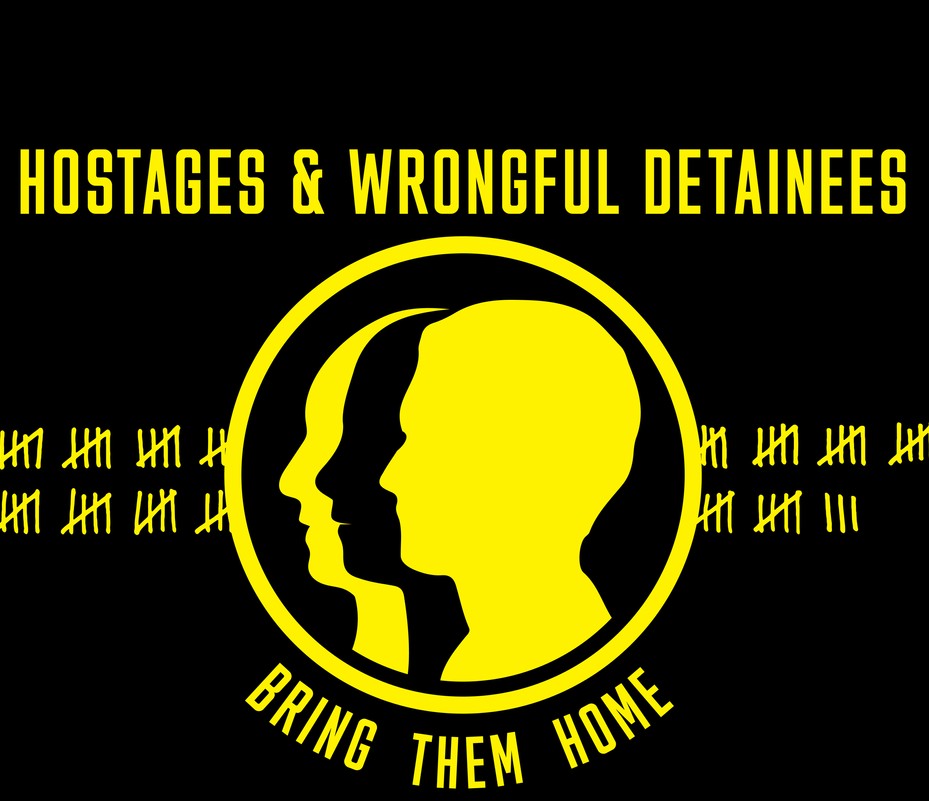
The world’s authoritarian regimes and terrorist organizations are taking more Americans hostage than ever before, and from time to time, one of these cases will grab the public’s attention. Today it is WNBA player Brittney Griner in Russia. Previously, it was Pastor Andrew Brunson, who was held by Turkey, and student Otto Warmbier, who was held in North Korea and tragically died as a result of his captivity shortly after his release.
In most cases, however, the plight of American hostages and wrongful detainees never makes the front pages. They are known only to their family and friends and the small coterie of diplomats and officials charged with getting these Americans back home.
As the daughter of Robert Levinson, the longest-held hostage in American history, and the past U.S. National Security Advisor and Special Presidential Envoy for Hostage Affairs, we know these fellow families well. We have worked alongside them, sharing their pain, and doing our best to bring their loved ones home. We have been fortunate to see many Americans return. The passage of the Robert A. Levinson Hostage Recovery and Hostage Taking Accountability Act will further assist those who are still captive.
One simple, yet powerful, way to further galvanize the public and our leaders into action? An official flag.

With an Act of Congress, a new banner could be flown under the Stars and Stripes on government buildings — from post offices throughout the country to embassies around the world. The flag would serve as a national promise to the families of hostages and wrongfully detained Americans that the United States is doing everything in its power to get them back. It also would spread awareness of the national emergency this issue has quickly become, hopefully leading to more pressure on the government to act — and deliver — on that promise.
After a lengthy design process, the families of current and former hostages and the organizations that support them have helped create such a flag.
There are five main elements to the flag. First, the flag’s title, “Hostages and Wrongful Detainees,” which complies with the recognized language of The Levinson Act. Second, the counting-days symbol, which emphasizes the central attribute of their struggle: Each day that passes is another day that hostage families are robbed of being whole. Third, three human profiles, which represent the hostage’s individual fight and shows our nation’s diversity. Fourth, the motto “Bring Them Home,” which is a call to action. Fifth, the flag’s yellow and black colors, which hearken to the tradition of using yellow ribbons to remember our captives and the darkness of their cells, dungeons and caves.
There is a strong precedent for the hostage families’ effort. In 1970, a group of families of Prisoners of War (POWs) and those Missing in Action (MIAs) fought to bring awareness to their loved ones’ suffering by creating the National League of Families POW/MIA flag, as the “symbol of our Nation’s concern and commitment to resolving as fully as possible the fates of Americans still prisoner, missing, and unaccounted for. ...”
The POW/MIA flag is flown over the White House, in Congress and all manner of federal buildings. Seeing this flag reminds every American of the continuous fight of these families to bring their loved ones home and of our gratitude to their sacrifice. The flag also was a powerful element in the push to bring home all American POWs at the end of the Vietnam War.
Today, according to the James W. Foley Legacy Foundation, there are at least 67 Americans wrongfully held abroad. They are captive because of the belief that American citizens can be swapped for imprisoned comrades, ransomed to finance malign activities or used to leverage United States officials to change government policy. But whatever the reason, it means 67 families have had their lives suspended. They are in anguish and pain as they contemplate the condition of their loved ones every day.
Washington has lately gotten somewhat more serious in tackling this crisis. President Barack Obama established the Special Presidential Envoy for Hostage Affairs office in 2015. President Donald Trump signed the Levinson Act into law in 2020. Just a few weeks ago, President Joe Biden issued an executive order aimed at preventing the taking of more Americans. Bringing our hostages and wrongful detainees home is a nonpartisan national priority. But more can be done.
It would be appropriate in the same legislation to declare a National Day of Awareness for Hostage Taking and Wrongful Detention.
Being taken hostage because we are American can happen to any of us, and, unfortunately, it is happening too often around the world. Like our beloved POWs and MIAs, the hostages and wrongful detainees deserve an official flag to remind the American people that they are being robbed of their freedom solely because they carry a blue passport emblazoned with our nation’s seal. Let us show our commitment to our fellow citizens in such dire circumstances and make clear that bringing our American captives home is a national priority.
----------------------------------------
By: Sarah (Levinson) Moriarty and Robert C. O’Brien
Title: Opinion | A Flag for American Hostages
Sourced From: www.politico.com/news/magazine/2022/08/30/a-flag-for-american-hostages-00054115
Published Date: Tue, 30 Aug 2022 03:30:00 EST
Did you miss our previous article...
https://consumernewsnetwork.com/politics-us/read-the-unsealed-redacted-maralago-affidavit






